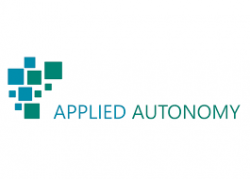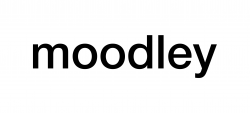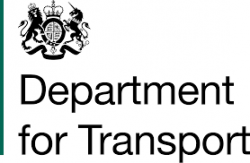Joining the dots between MaaS, autonomous cars, micromobility, connected vehicles, eVTOL, hyperloop and other future transportation technologies will be key to a successful deployment and adoption. We will cover a range of transport solutions in this stream, which will require thought and discussion around seamless integration, infrastructure, and investment requirements, creating smooth, multimodal passenger journeys and the broad picture of a mass transport solution for all.

Olav Madland
CEO
Applied Autonomy
NORWAY

Synopsis: The UN sustainable development goals are our key performance indicators when implementing autonomous vehicles. Goal 17 motivates us to share our experience and useful lessons from Kongsberg. We have been operating a fleet of vehicles in mixed traffic during the winter. Much snow and low temperatures have been challenging. The vehicles are integrated into public transport as a regular service. This spring we will begin an on-demand service and start driving without an operator. Our transport service supports two studies, and we will share results from them. We will also share our experience with remote control center services and 5G for V2X.

Johnny Ojeil
director
Arup
UK

Synopsis: The paper will cover the various accessibility and multi-modal transport requirements to enable an airport to function. This includes policy, legislation and technology advancements and the challenges and opportunities they may bring. Arup has recently been successful in designing a people-mover-type system linking Luton Airport with the railway station. We will explain how this contributes toward a more sustainable form of transport as part of the challenge to increase modal share by non-car users. The presentation will also explore the impact of potential autonomous vehicle take-up on car parking.

Andy Taylor
strategy director
Cubic Transportation Systems
USA

Synopsis: This speech will argue that ultimately, it’s trust that will cement the role of shared mobility in furthering the MaaS vision, and that our attitudes to sharing rides with strangers in environments with or without a driver will depend largely on the emergence of a new breed of trust models, tools and services. Known collectively as 'Trust as a Service', they will sit at the core of shared transportation services and impose a regime of trustworthiness on an industry where regulation remains an issue. This presentation will help policymakers, technologists and transit agencies tread a delicate line between technological innovation and riders’ confidence.

Vlad Marica
solution consultant
Fluidtime Data Services GmbH
AUSTRIA

Synopsis: The presentation will demonstrate how public authorities can open the urban mobility market to new transport operators and facilitate market entry by providing a technical infrastructure. Fluidtime has developed a MaaS platform technology suitable for a Level 4 MaaS ecosystem in which city public authorities can become regulatory service providers. They can focus on their urban goals by gaining access to mobility analysis data while providing standardized and regulated market entry to transport services. The mobility market will benefit from new competitors and customers. The public will be enabled to optimally distribute resources and more efficiently utilize private and public transport.

Hakan Kostepen
founder and partner
H&K Ventures LLC Silicon Valley
USA

Synopsis: Changes in human mobility are affecting every element of transportation. 'Mobility 4.0' covers all areas of transportation, including information, energy, people and things. The presentation will provide a comprehensive overview of the intersection of Silicon Valley technology, business, and lifestyle trends.
Grzegorz Ombach
ex-Qualcomm vice president and general manager Halo China
Independent Consultant
GERMANY
Synopsis: During the next 30 years, about 70% of the population will live in megacities. This shift requires entirely new approaches to urban mobility and urban planning. We can already see many positive developments, such as electric cars, e-scooters, e-buses, autonomous electric pods, e-planes, super-fast charging, stereoscopic garages and many others. New technologies like wireless charging, batteries with 10C rate for charging and discharging, and new 5G technology for more reliable and faster data communication will help to improve current mobility solutions and create new ones. This presentation will discuss some examples that are currently under development or in a test. It will give an outlook on future urban mobility as part of a new city concept.

Daniel Huber
managing partner, strategic design
Moodley Industrial Design GmbH
AUSTRIA

Synopsis: In 2030, 70% of the world's population will live in urban areas. This means that more than 40 megacities will emerge, and a disruptive way of thinking about mobility will be inevitable. For more than 20 years, Daniel and his team have been working with Siemens to make the mobility of the future even more attractive, efficient and user-friendly. Their latest project – 'one for all' – dissolves the boundaries of known ideas. It is a step into a future in which inter-modality is thought through to its ultimate form. We call it supermodal mobility.

Volker Aderhold
DACH general manager
Optibus
ISRAEL

Synopsis: Cities spend billions of dollars maintaining, upgrading and operating their transit networks, but this market receives remarkably little attention in conversations about the future of mobility. With more than two-thirds of the global population slated to live in urban areas by 2050, investment in world-class mobility is essential. This presentation will walk the audience through how artificial intelligence and cloud-based transit technology are empowering transit agencies to improve operations and stay at the center of mobility. It will also present examples of how forward-thinking transit agencies and operators from around the world are using advanced software.

Adam Loewy
design lead
Tangerine
UK

Synopsis: This presentation will illustrate how a human-centric approach to design will influence the future of transportation, and ultimately shape the way we live. With increasing urbanization, multimodal transport networks are becoming an ever more important aspect of everyday life. The presentation will investigate how these changes will result in a new rationale and how human behavior will influence the emerging transport landscape. By grasping key cultural, social and behavioral developments in human experience, the speaker will share insights from a designer’s perspective into how the challenges presented by Mobility as a Service (MaaS) offer opportunities to introduce positive change.
Sri Ganesan
mobility consultant, disruptive innovations in mobility
TNO
NETHERLANDS

Synopsis: The increasingly abundant arrival of new technologies, their cross-disciplinary application in transport, and the way that people use these technologies force researchers and decision makers to keep up with these developments and regulate them if necessary. With the availability of data in today's world, combined with advanced computing power and artificial intelligence (AI) approaches, we can enhance the use of information to create a solid foundation for foresight of new disruptive technologies and innovations. The presentation will provide an overview of the foresight framework, the Innovation Outlook tool and the MaaS use case, and will conclude with the results and lessons learned.



Mark Ledbury
head of transport appraisal and strategic modeling
UK Department for Transport
UK

Synopsis: This session will provide an overview of the analysis carried out by the UK Department for Transport to future-proof investment decisions, and the plans to develop this analysis. This will cover our appraisal methodologies, including assessing the wider economic and social impact of projects, the research we have done to assess the evolving uptake and longer-term impact of new technologies, and our methodologies to incorporate uncertainty in investment decisions.

Giles Perkins
head of future mobility
WSP
UK

Synopsis: The presentation will discuss the opportunity that future mobility provides to improve the customer experience, removing friction for passenger and freight trips while delivering wider environmental and social benefits. Through practical examples, it will explain how future mobility is being shaped by trends external to transportation, and how industry can learn by adopting a more agile approach to asset and service delivery.